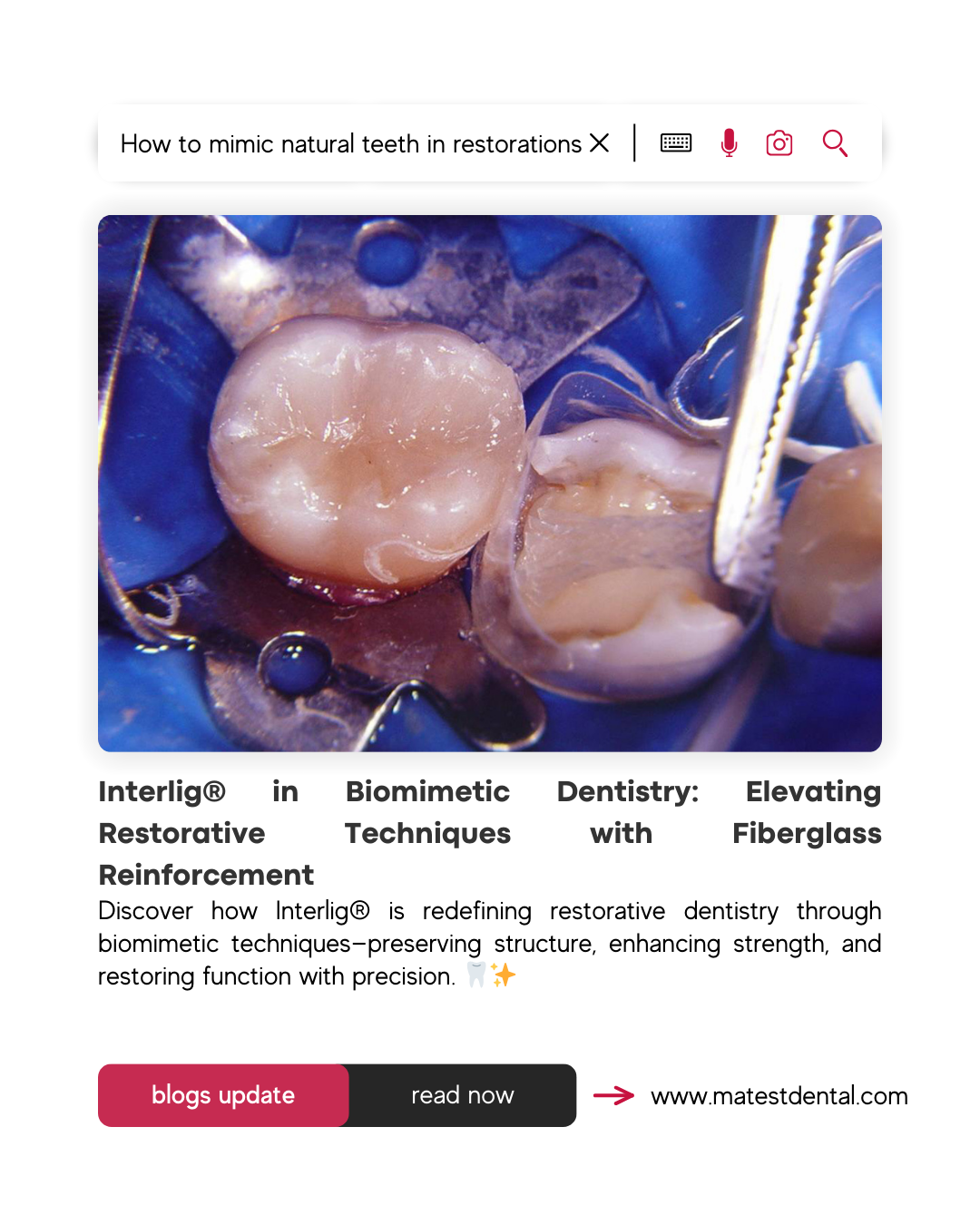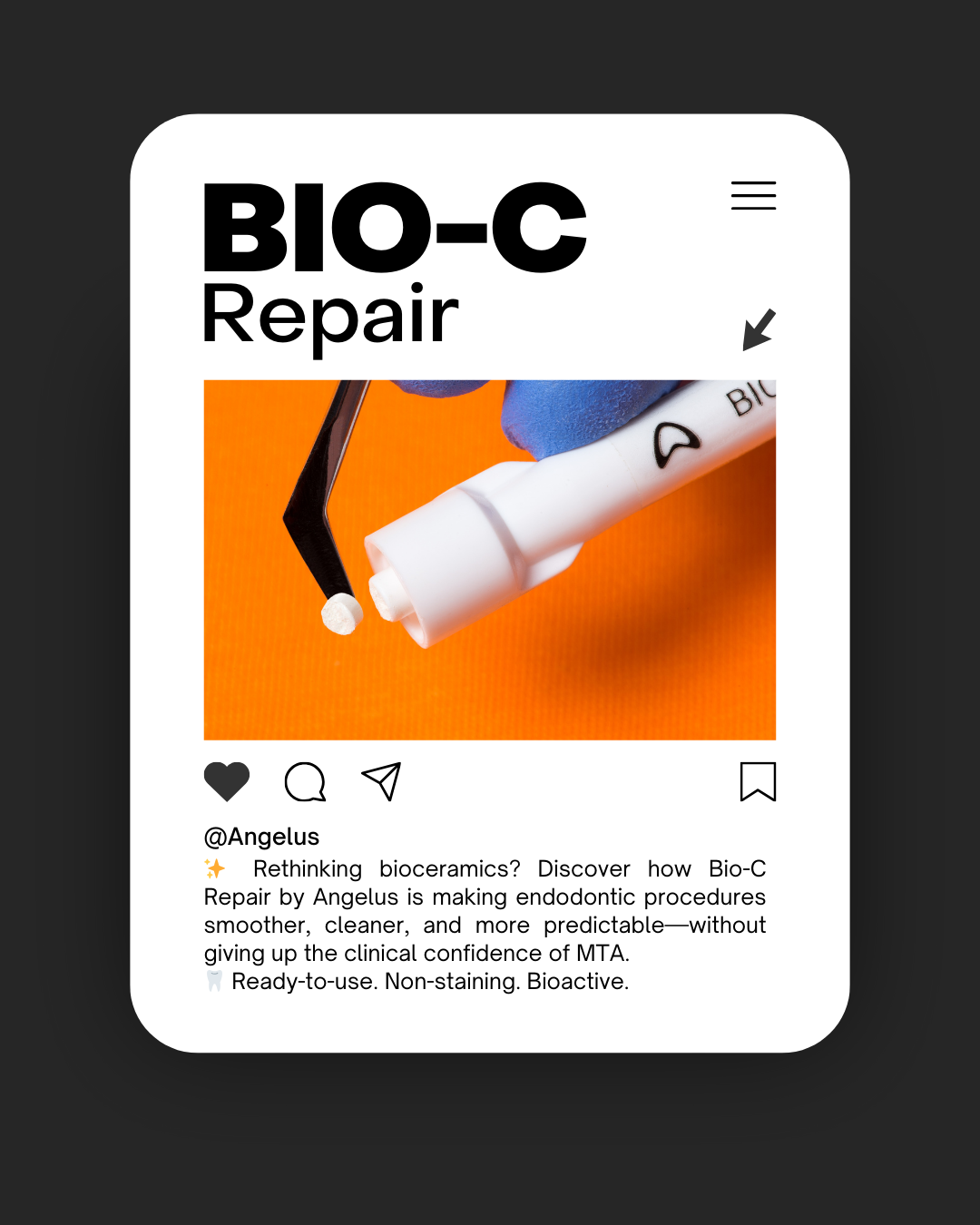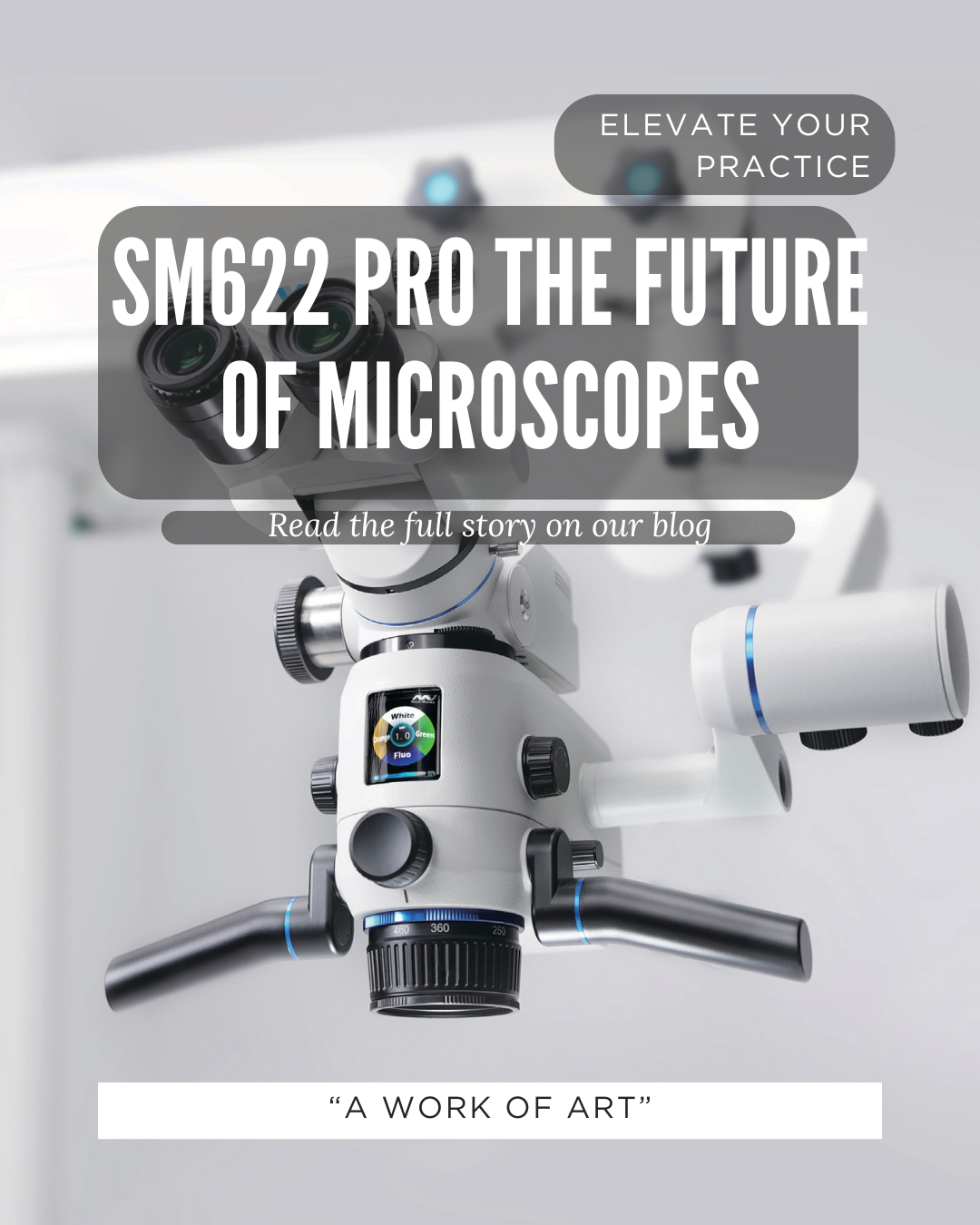Interlig® in Biomimetic Dentistry: Elevating Restorative Techniques with Fiberglass Reinforcement
Biomimetic dentistry continues to reshape clinical protocols by aligning restorative procedures with the principles of natural tooth biomechanics. At the core of this approach is the use of materials that replicate the structural and functional behavior of dentin and enamel. One such material is Interlig®, a braided fiberglass ribbon that offers a conservative, adaptable, and biomimetic solution for structural reinforcement—especially in compromised anterior and posterior teeth.
Biomimetics: Function Through Imitation
Biomimetics in dentistry centers around the preservation of tooth vitality and structure, aiming to replicate the behavior of natural dentition under function. Unlike traditional approaches that often sacrifice sound tooth structure, biomimetic restorations strive to maintain what remains while rebuilding with materials that emulate the tooth’s original biomechanical properties.
This philosophy applies across a range of restorative treatments, particularly those following endodontic therapy, where internal support is often critical.
Why Interlig®?
Interlig® is a pre-impregnated braided fiberglass ribbon with high tensile strength and translucency. It serves as a flexible intracoronal reinforcement, offering an alternative to conventional rigid posts. Its clinical advantages make it a valuable asset in both direct and indirect restorative workflows.
Clinical Benefits Over Traditional Fiberglass Posts
• Minimally Invasive: No need for extensive post-space preparation, preserving dentin and reducing fracture risk.
• Better Stress Distribution: The braided structure allows for multidirectional stress dissipation, improving biomechanical behavior.
• Esthetic Compatibility: Its translucency facilitates integration in the esthetic zone, avoiding shadowing through composites.
• Adaptability: Easily conforms to internal cavity geometry, ideal for irregular spaces or shallow canal entry points.
Expert Insights: Handling and Technique
According to Professor Rodrigo Aucélio, while the literature has discussed fiber-reinforced dentistry since the 1960s, interest in materials like Interlig® has surged only recently as biomimetic concepts gain traction.
Professor Andressa Fabro emphasizes precise handling to maintain the integrity of the braid:
“The fiber must be handled delicately to prevent unraveling. Always isolate the field, cut with sharp scissors, and insert with minimal pressure to preserve the braid’s architecture.”
Key Clinical Tips:
• Absolute isolation is critical to control moisture and ensure proper adhesion.
• Select fiber size based on cavity dimensions for optimal adaptation.
• Place Interlig® within flowable resin immediately after application for better bonding.
• Fully encapsulate the fiber with composite or flowable resin to prevent exposure and ensure longevity.
Clinical Protocol Example: Tooth 11 Coronal Reinforcement
A case involving fibro-reinforced coronal reconstruction of tooth 11 highlights Interlig®’s versatility:
1. Bleaching performed with a 15-day wait.
2. Provisional restoration removed and canal orifice minimally prepared.
3. Selective enamel etching and adhesive application (self-etch technique).
4. A2 flowable resin applied, followed by Interlig® placement on buccal and palatal walls.
5. Covered with A1D composite in increments.
6. Finished with occlusal adjustment, polishing, and final esthetic refinements.
The result was a structurally reinforced, esthetically pleasing anterior tooth restored with minimal invasion.
Conclusion
Interlig® aligns perfectly with the principles of biomimetic dentistry—preserving structure, reinforcing function, and maintaining esthetics. As a fiber-reinforcement option, it offers a conservative yet powerful alternative to traditional post systems, ideal for clinicians seeking modern, biologically harmonious solutions.
🔗 Explore the full clinical potential of Interlig® here:



